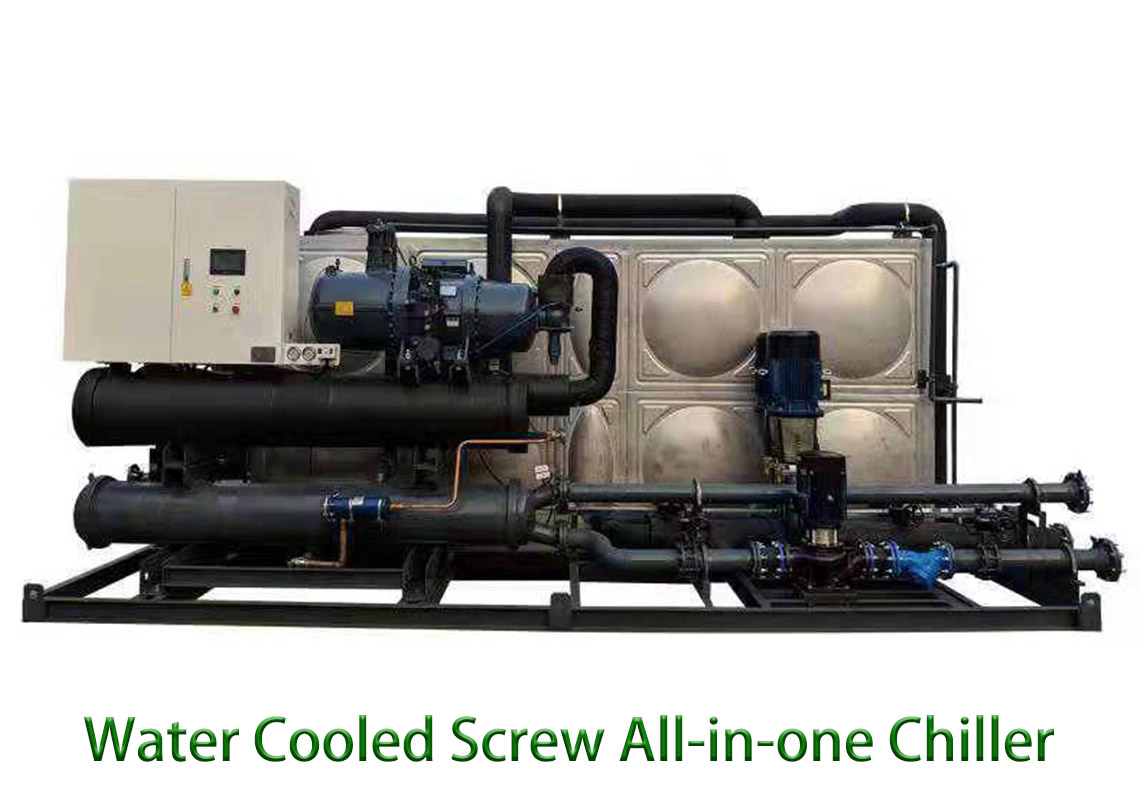1. The cooling water temperature is too high, and the condensation effect is poor:
The rated working condition of the cooling water required by the chiller is 30~35°C. The high water temperature and poor heat dissipation will inevitably lead to high condensation pressure. This phenomenon often occurs in high temperature seasons. The reason for the high water temperature may be: cooling tower failure, such as the fan is not turned on or even reversed, and the water distributor does not turn, which means that the temperature of the cooling water is high and rises rapidly; the external temperature is high, the waterway is short, and the amount of circulating water In this case, the cooling water temperature is generally maintained at a relatively high level, which can be solved by increasing the water storage tank.
2. The cooling water flow is insufficient and cannot reach the rated water flow:
The main performance is that the pressure difference between the inlet and outlet of the unit becomes smaller (compared with the pressure difference at the beginning of the system's operation), and the temperature difference becomes larger. The cause of insufficient water flow is the lack of water or air in the system. The solution is to install an exhaust valve at a high place in the pipeline to exhaust; the pipeline filter is clogged or too fine, and the water permeability is limited. Regularly clean the filter screen; the water pump is selected to be small and does not match the system.
3. Condenser scaling or blockage:
Condensed water is generally tap water, which is easy to scale when the temperature is above 30°C, and because the cooling tower is open and directly exposed to the air, dust and foreign matter can easily enter the cooling water system, causing the condenser to be dirty and blocked, and the heat exchange area is small , the efficiency is low, and it also affects the water flow. The performance is that the water pressure difference between the inlet and outlet of the unit and the temperature difference become larger, the temperature of the upper and lower parts of the condenser is very high when touched by hand, and the copper tube of the condenser liquid outlet is hot. The unit should be backwashed regularly, and if necessary, chemical cleaning and descaling should be carried out.
4. Too much refrigerant charge:
This kind of situation generally occurs after maintenance, and the performance is that the suction and discharge pressure and the balance pressure are high, and the operating current of the compressor is also high. Under the rated working condition, the air should be released according to the suction and exhaust pressure, balance pressure and operating current until it is normal.

5. The refrigerant is mixed with air, nitrogen and other non-condensable gases:
This kind of situation usually occurs after maintenance and the vacuuming is not complete. It can only be drained, re-evacuated, and re-charged with refrigerant.
6. False alarms caused by electrical failures:
Because the high-voltage protection relay is damp, poor contact or damaged, the electronic board of the unit is damp or damaged, and the communication failure causes false alarms. For this kind of false fault, the high-voltage fault indicator light on the electronic board is often off or dimly lit, the manual reset of the high-voltage protection relay is invalid, and the operating current of the measured compressor is normal, and the suction and discharge pressure are also normal.
7. The evaporation pressure is too low:
It may be that the evaporation pressure of the water-cooled chiller is too low due to insufficient refrigerant. Common reasons: Insufficient cooling water; less cooling load; throttle orifice failure (only makes the evaporation pressure low); the heat transfer tube of the evaporator is deteriorated due to scale and other pollution (only makes the evaporation pressure too low); Insufficient (only makes the evaporating pressure too low).
8. The oil pressure difference is too low:
If the compressor oil pressure is too low, the compressor will stop running. The common reasons are: the oil filter is clogged; too much refrigerant is mixed in the lubricating oil.
9. Oil temperature is too high:
If the oil temperature of the refrigeration compressor is too high, long-term operation will reduce the quality of the refrigeration oil and even carbonize the refrigeration oil. Common causes: the cooling capacity of the oil cooler is reduced; the supply of refrigerant for cooling the oil cooler is insufficient due to the blockage of the refrigerant filter.
10. Main motor overload:
Unbalanced power supply phase voltage; large power line voltage drop;
The introduction of various industrial chillers and common fault handling are relatively complicated. Generally, specific analysis is made according to the specific problems of the situation. It is recommended to judge according to the actual situation or contact the industrial chiller manufacturer to solve the problem.


